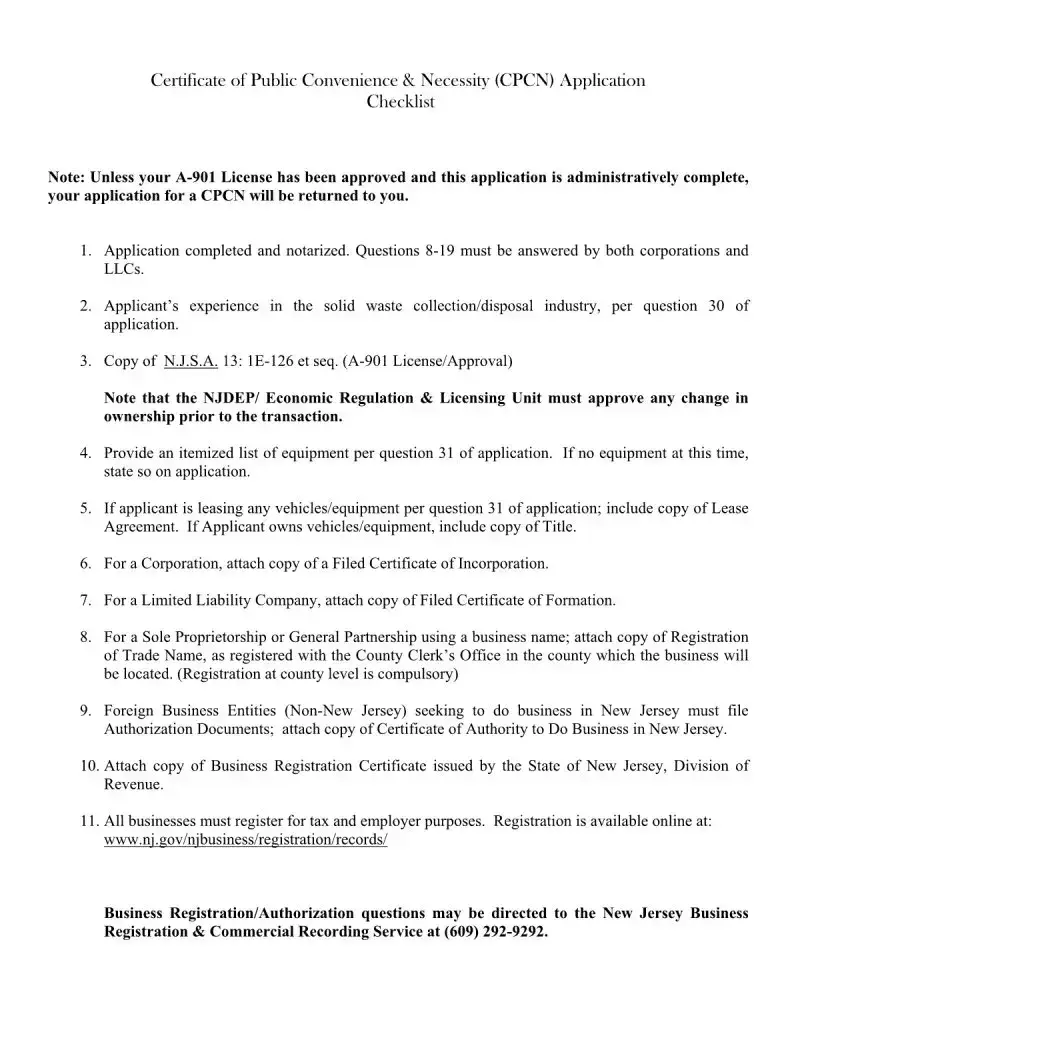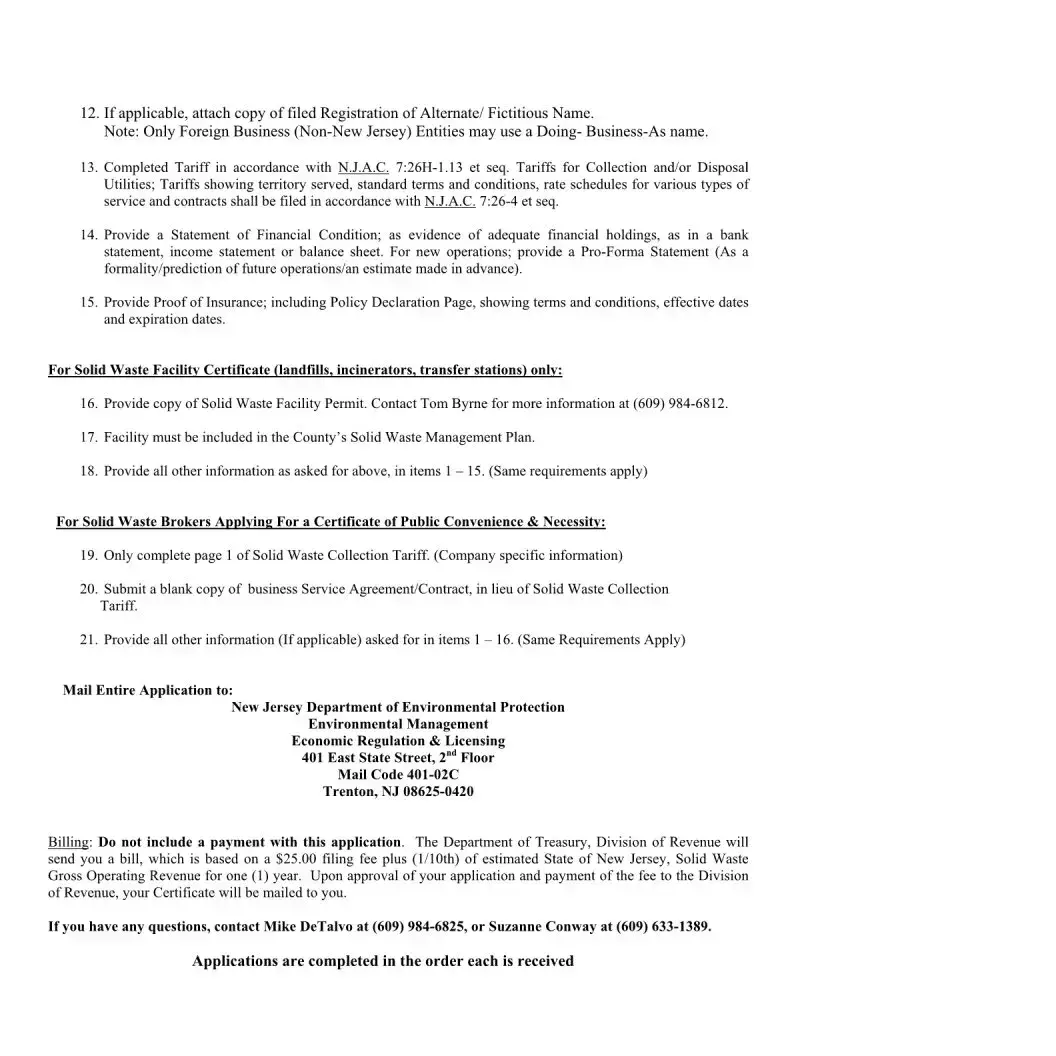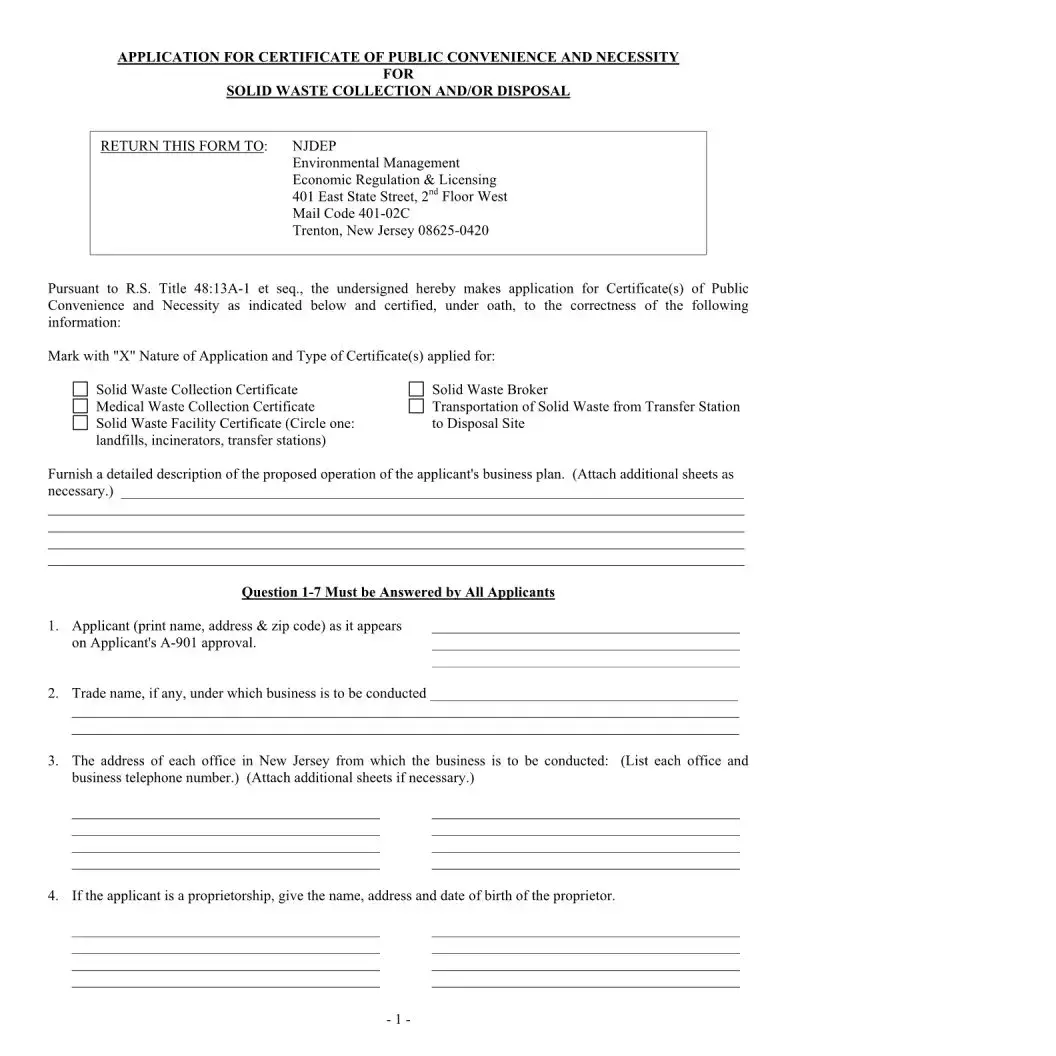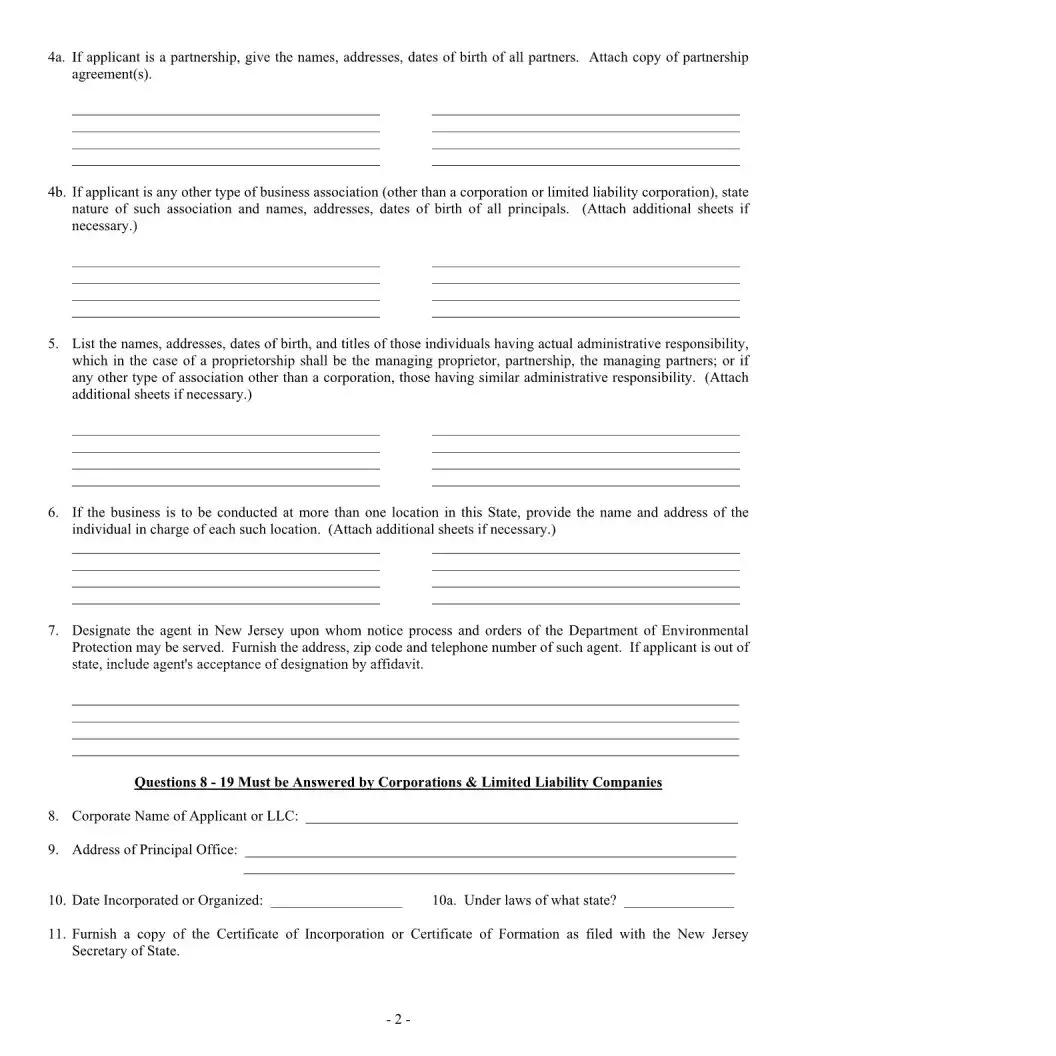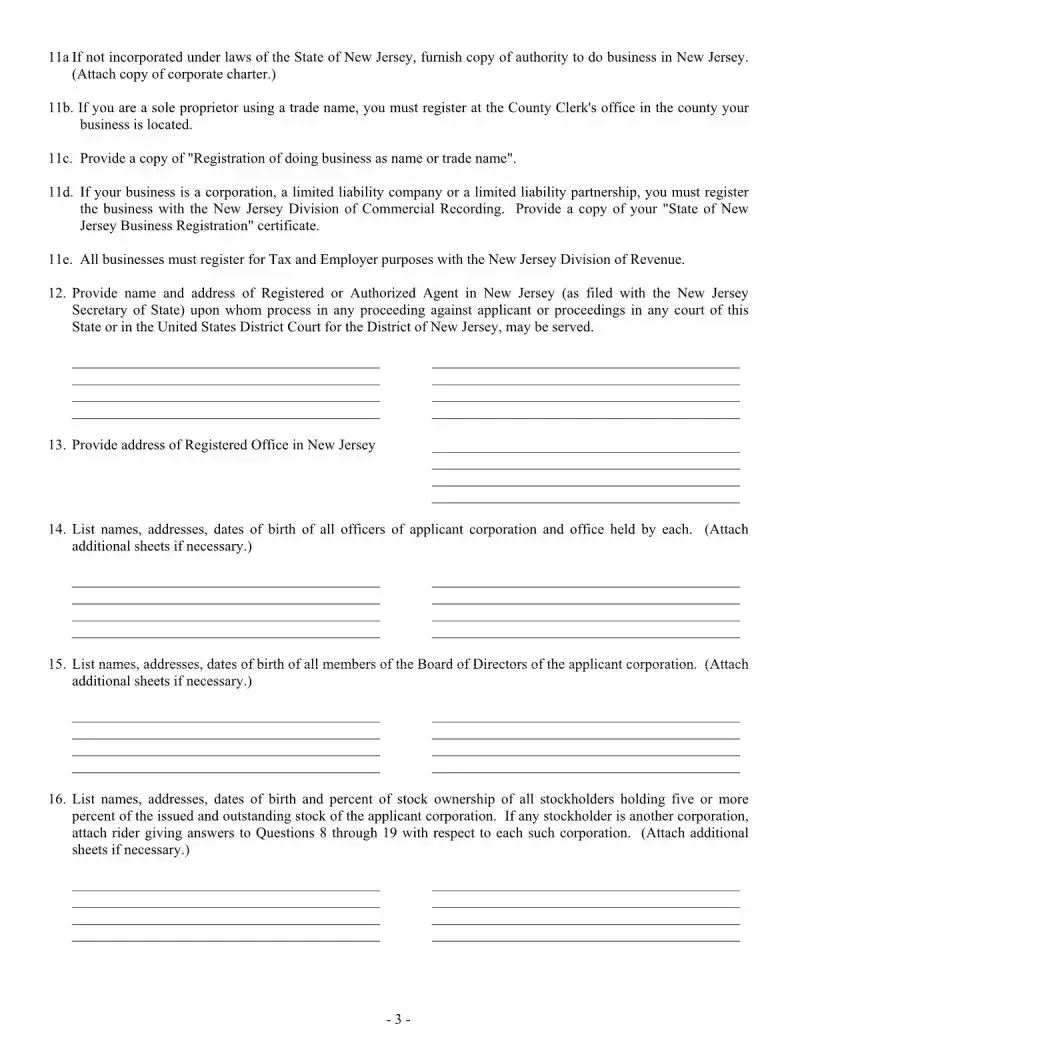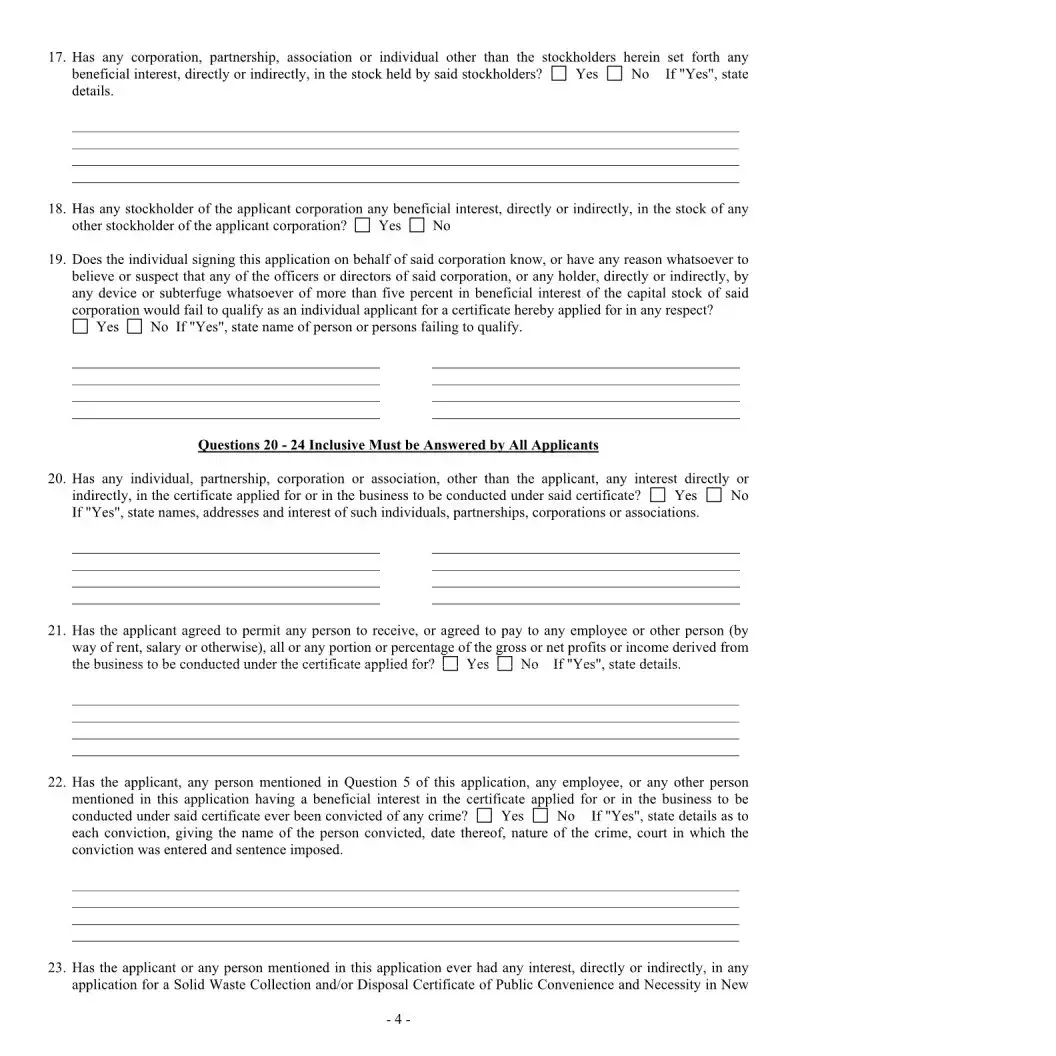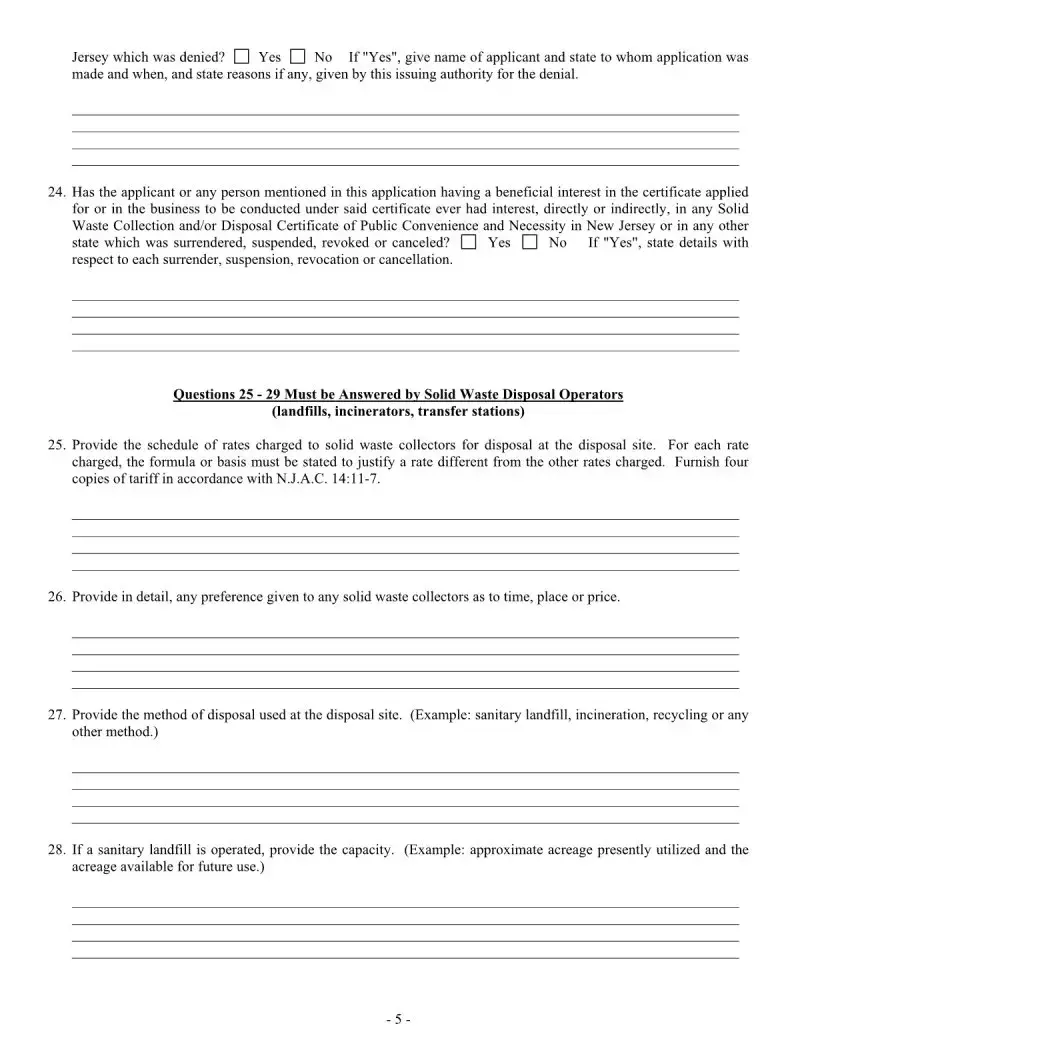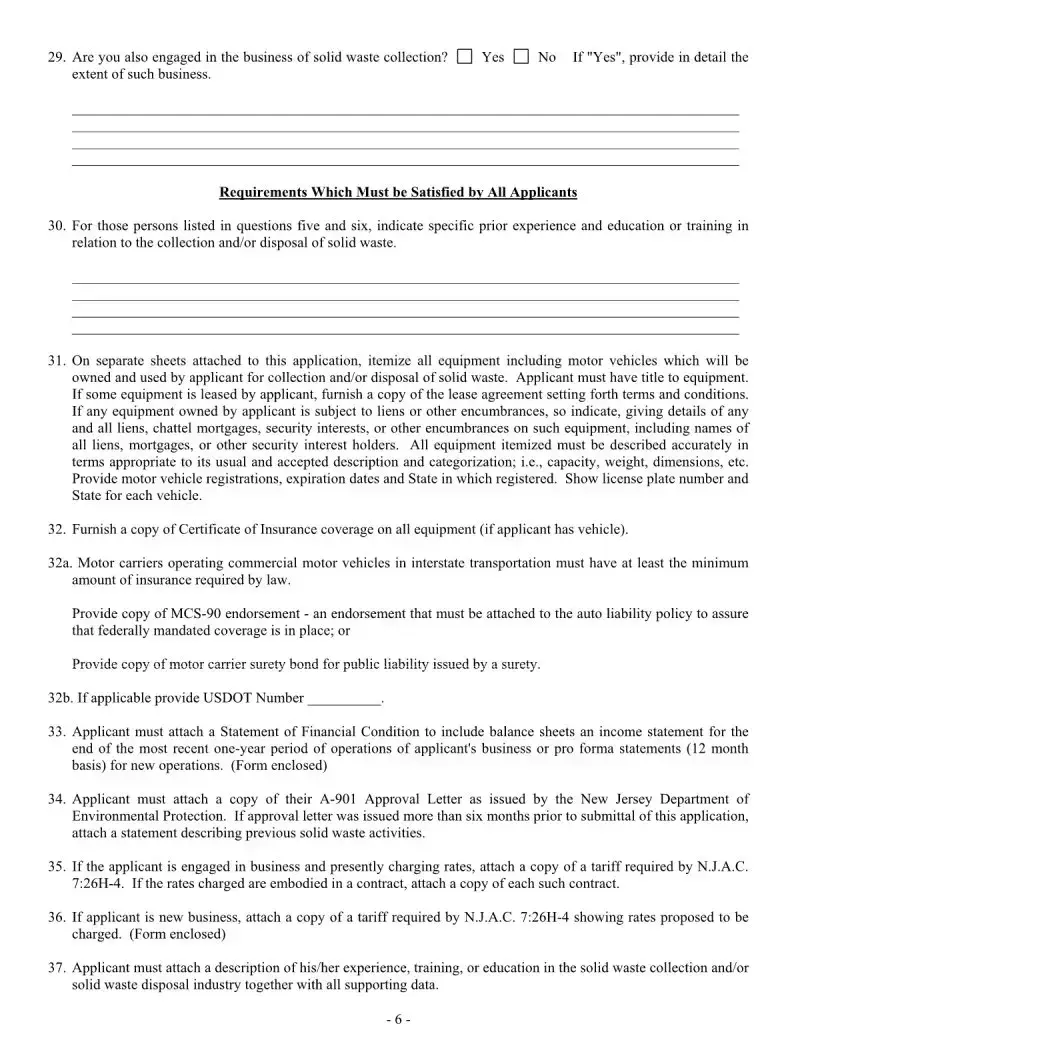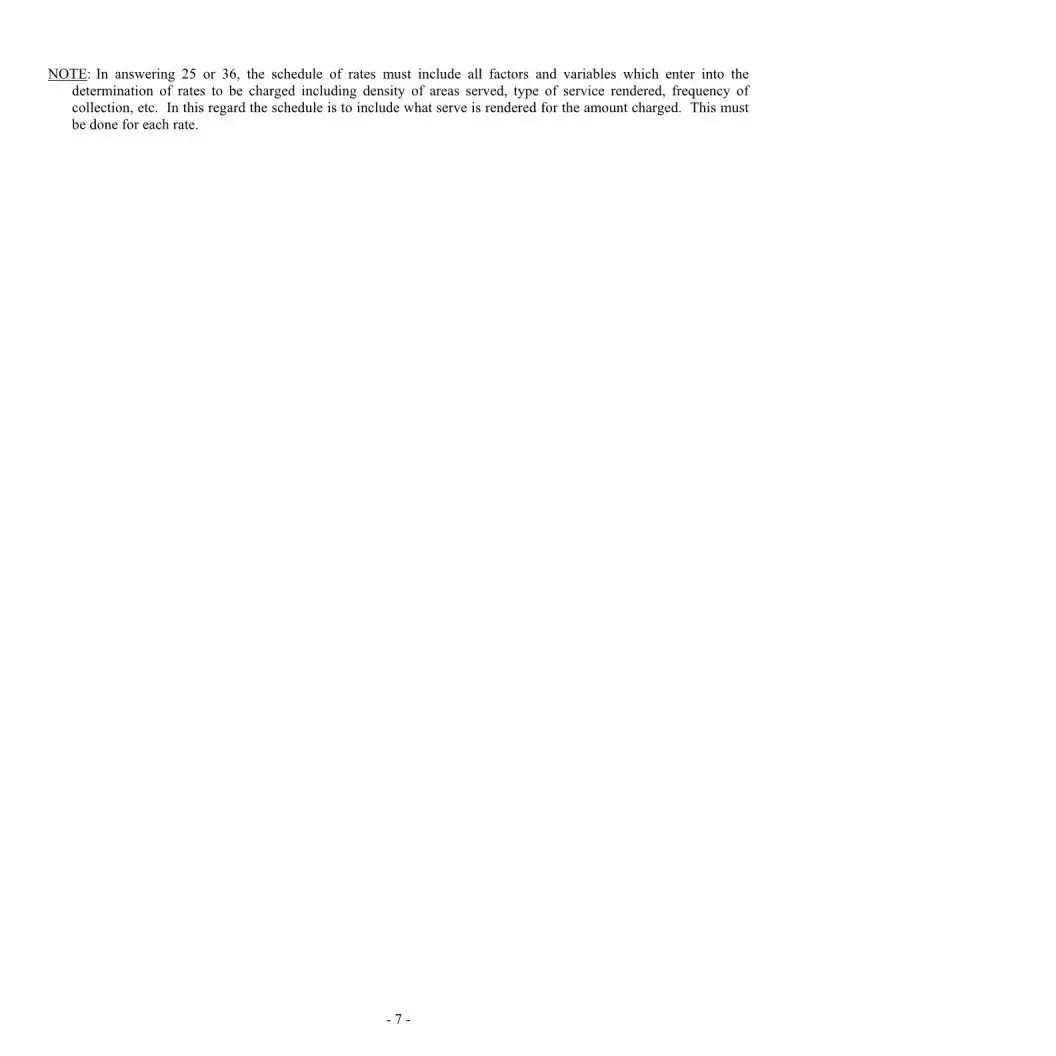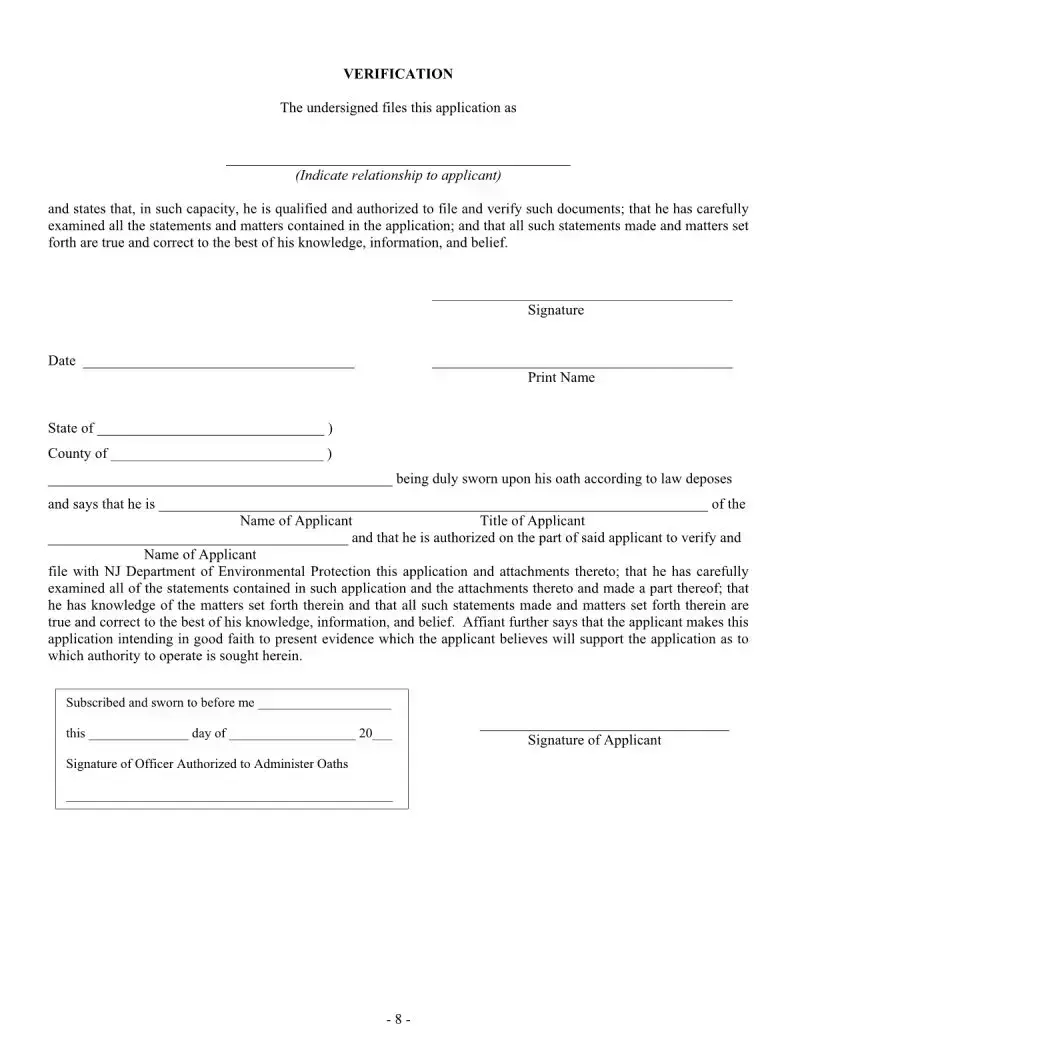The NJ CPCN (Certificate of Public Convenience and Necessity) form shares similarities with the FCC Form 605. Both are fundamental in the telecommunications sector, designed for entities seeking to offer communications services. The FCC Form 605 is crucial for entities needing to obtain or renew licenses for wireless communication facilities. Like the NJ CPCN, it ensures applicants meet specific criteria and standards to operate, highlighting their commitment to public convenience and necessity.
Comparable in nature to the NJ CPCN form is the DOT (Department of Transportation) Application for Operating Authority. This document is essential for transportation businesses seeking authority to operate interstate. It serves a similar purpose by ensuring that the transportation entity meets safety and financial responsibility requirements, ensuring they can provide necessary and convenient services to the public, mirroring the NJ CPCN’s goal of public service vetting.
Another analogous document is the FDA New Drug Application (NDA). Pharmaceutical companies must submit this before introducing a new pharmaceutical to the market. Like the NJ CPCN, the NDA is a detailed dossier that demonstrates the drug's safety and efficacy, ensuring it serves the public’s health needs. Both processes involve rigorous scrutiny to protect public welfare and ensure the services or products meet high-quality standards.
The Certificate of Need (CON), used in various states for health care facilities, also parallels the NJ CPCN form. A CON is required for the establishment, expansion, or modification of health care facilities, ensuring they are necessary to serve the community's health needs effectively. Both the CON and NJ CPCN involve a review process that evaluates the necessity and impact of proposed services on the public.
Similarly, the EPA Permit to Construct Application, required for new environmental facilities or modifications to existing ones, echoes the NJ CPCN form's objective. This permit ensures that the proposed project complies with environmental standards and will not adversely affect public health and safety, akin to how the NJ CPCBi tails a review for public service projects.
The Alcohol and Tobacco Tax and Trade Bureau's (TTB) Application for Basic Permit under the FAA Act shares a similar framework to the NJ CPCN. Entities seeking to engage in the alcohol or tobacco trade must obtain this permit, which like the NJ CPCN, mandates applicants to meet certain requirements that verify their operation serves public interest without detrimental effects, emphasizing regulated entity responsibility.
The Business License Application found in many municipalities parallels the NJ CPCN in its function. Businesses must apply for this license to legally operate within a city or county. This process ensures that the business is compliant with local laws and regulations, a concept similar to the NJ CPCN’s goal of ensuring entities serve the public interest and comply with specific standards.
The USDA's Biotechnology Regulatory Services (BRS) Application for Permit to Introduce Genetically Engineered Organisms is yet another document akin to the NJ CPCN form. This permit ensures that the introduction and use of genetically modified organisms are safe for the environment and public health, reflecting the NJ CPCN's goal of protecting public welfare through rigorous review.
The Securities and Exchange Commission (SEC) Form D resonates with the principles of the NJ CPCN form. This form is a notice filed by companies seeking to raise capital through the sale of securities exempt from registration. Similar to the NJ CPCN, it involves a review process that helps to protect investors and ensure the integrity of the financial markets.
Lastly, the Building Permit Application, required for new construction or significant alterations to existing structures, shares its core objective with the NJ CPCN form. It ensures that all construction complies with local building codes and regulations, safeguarding public safety and welfare, akin to the NJ CPCN's scrutiny of public service projects to ensure they meet established standards and serve the public interest.
